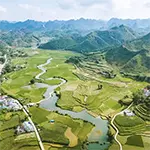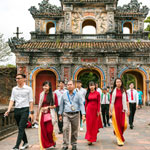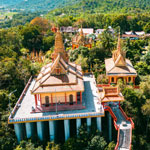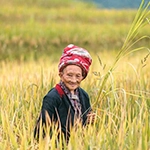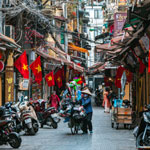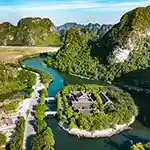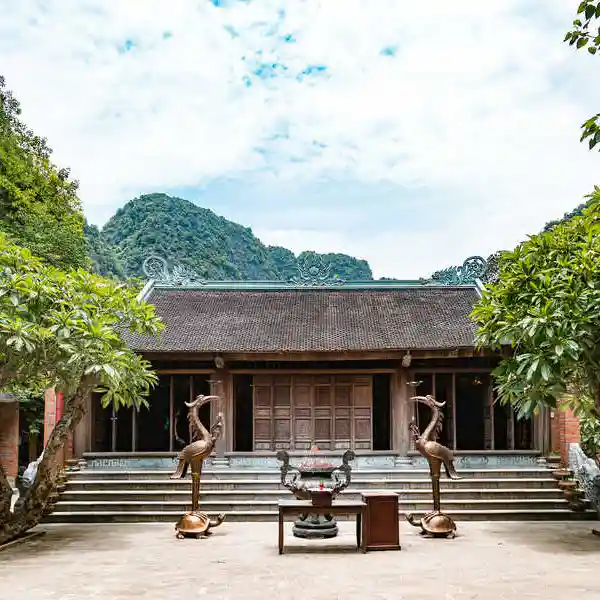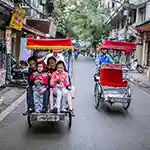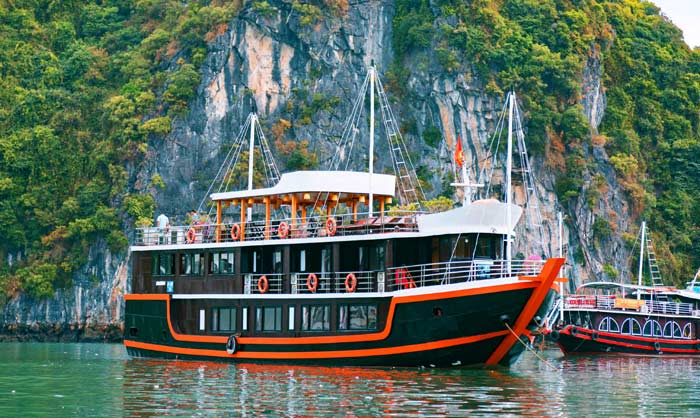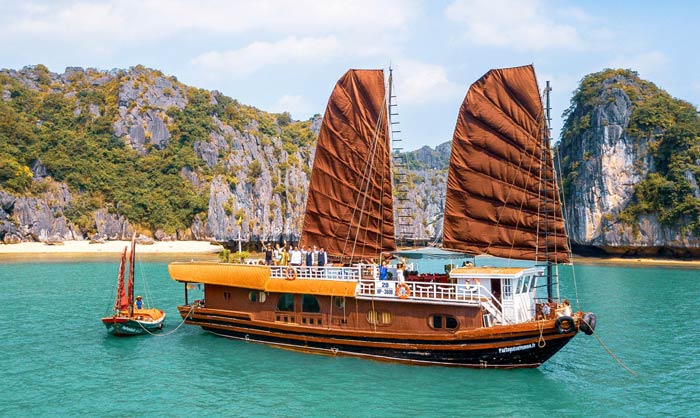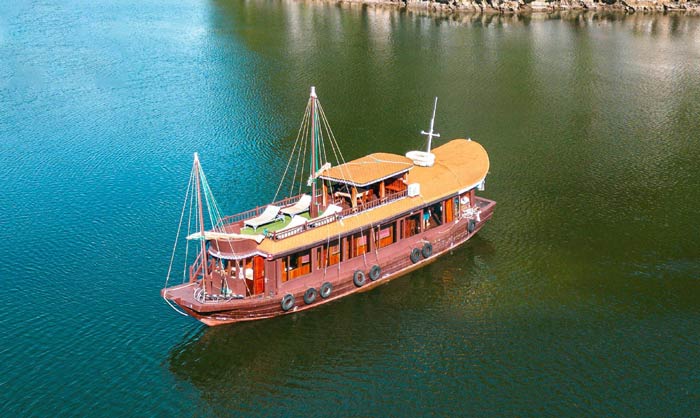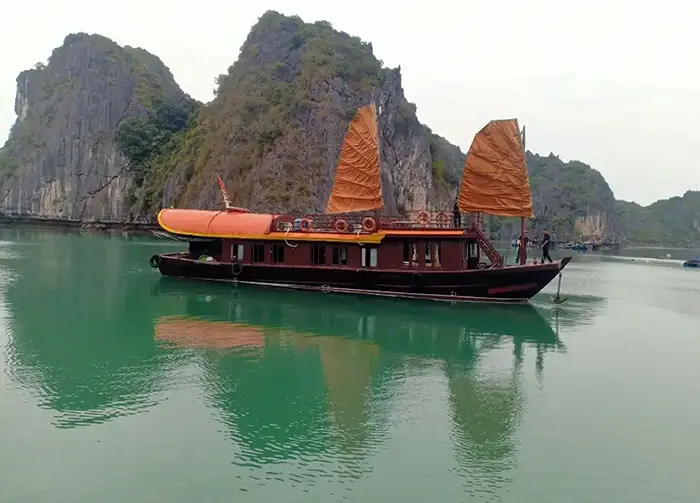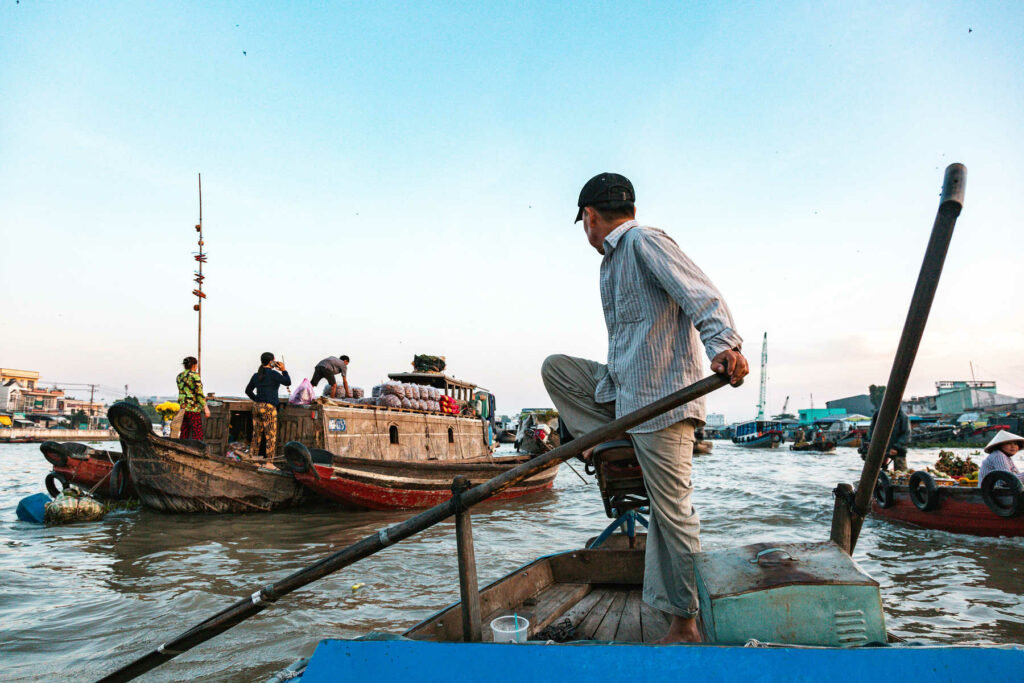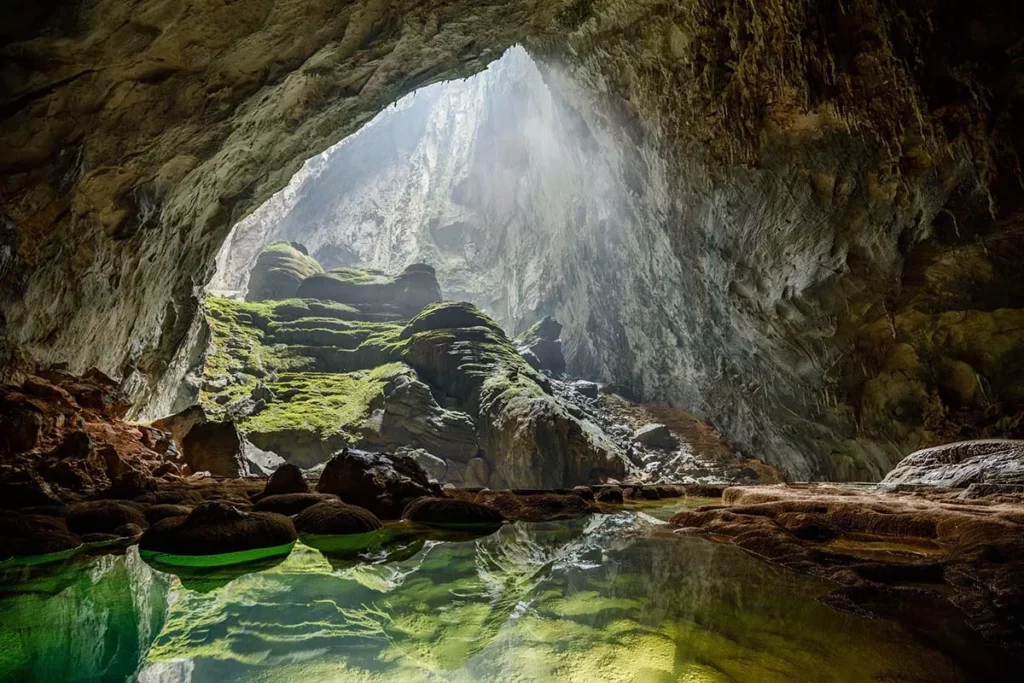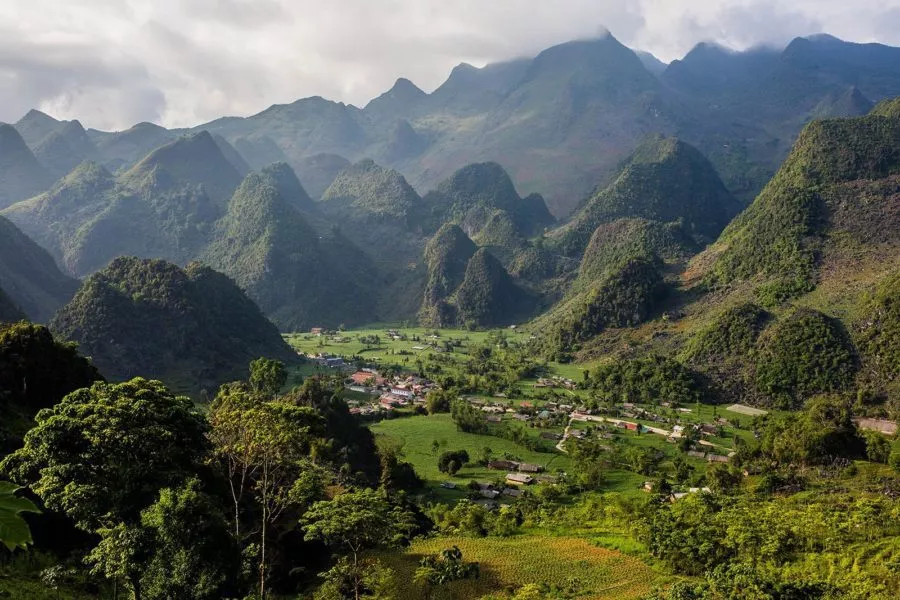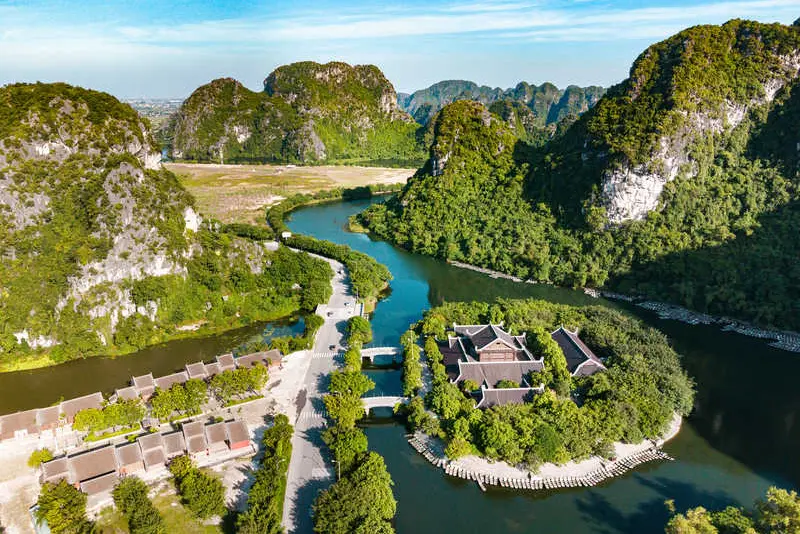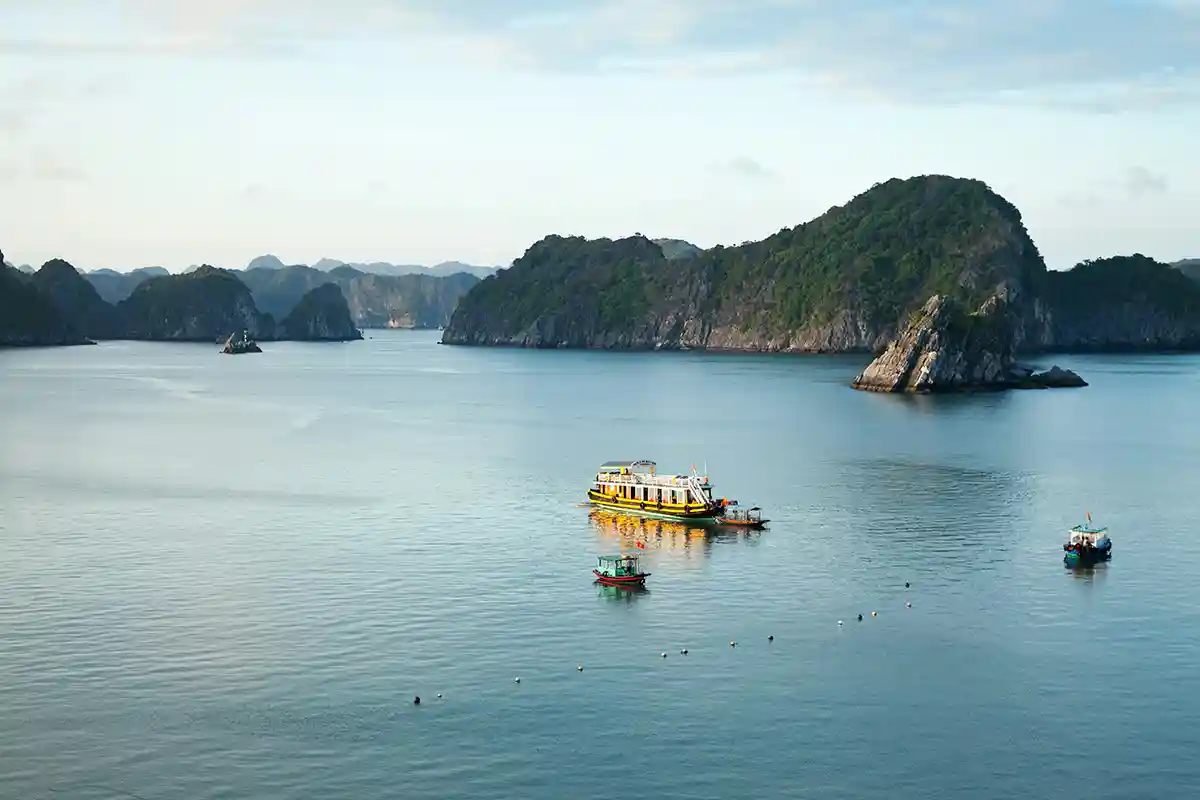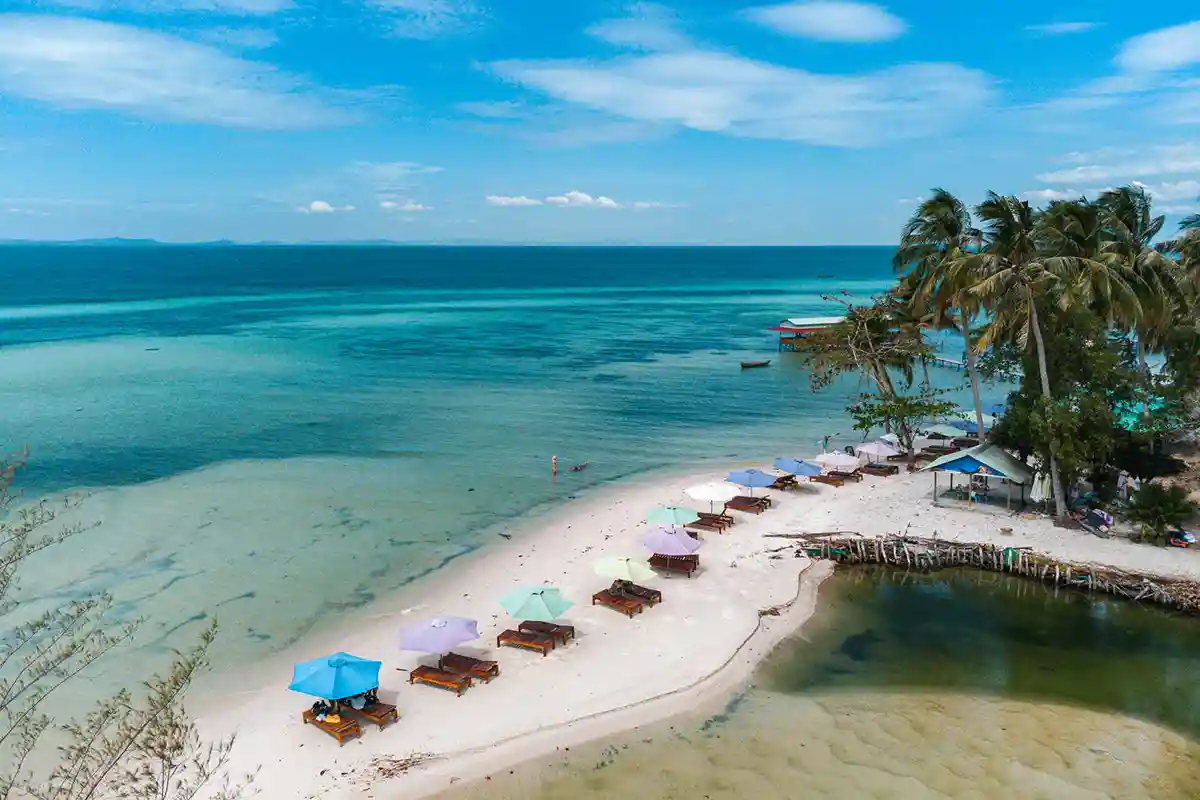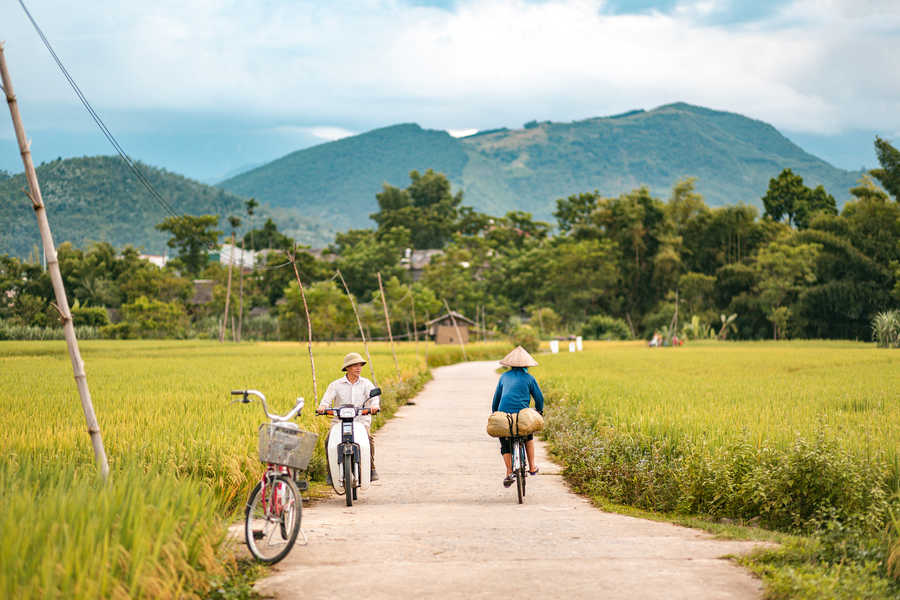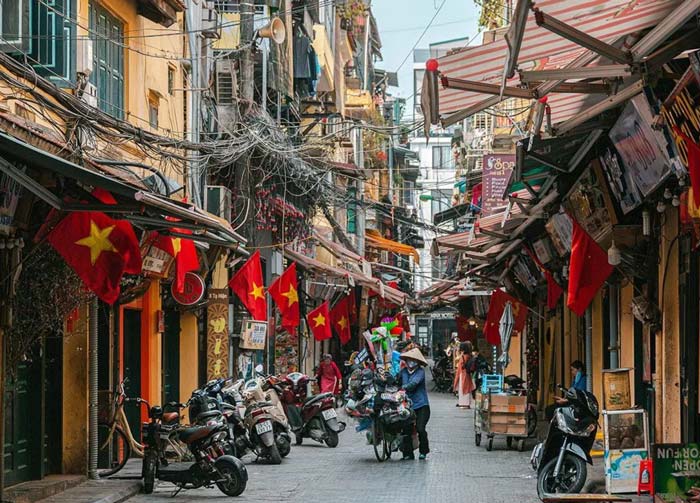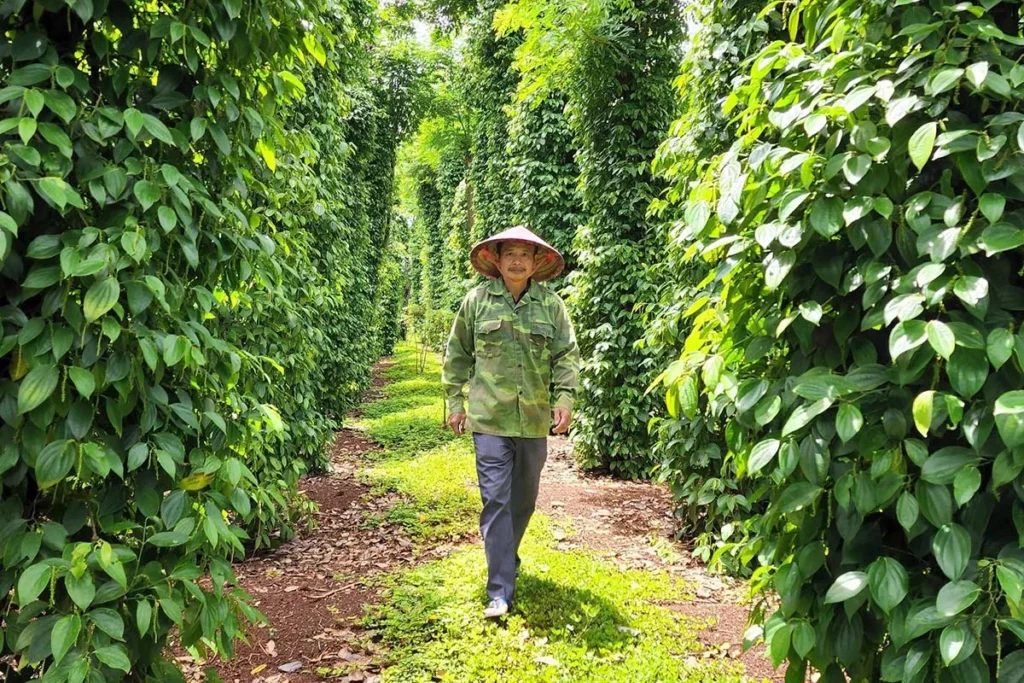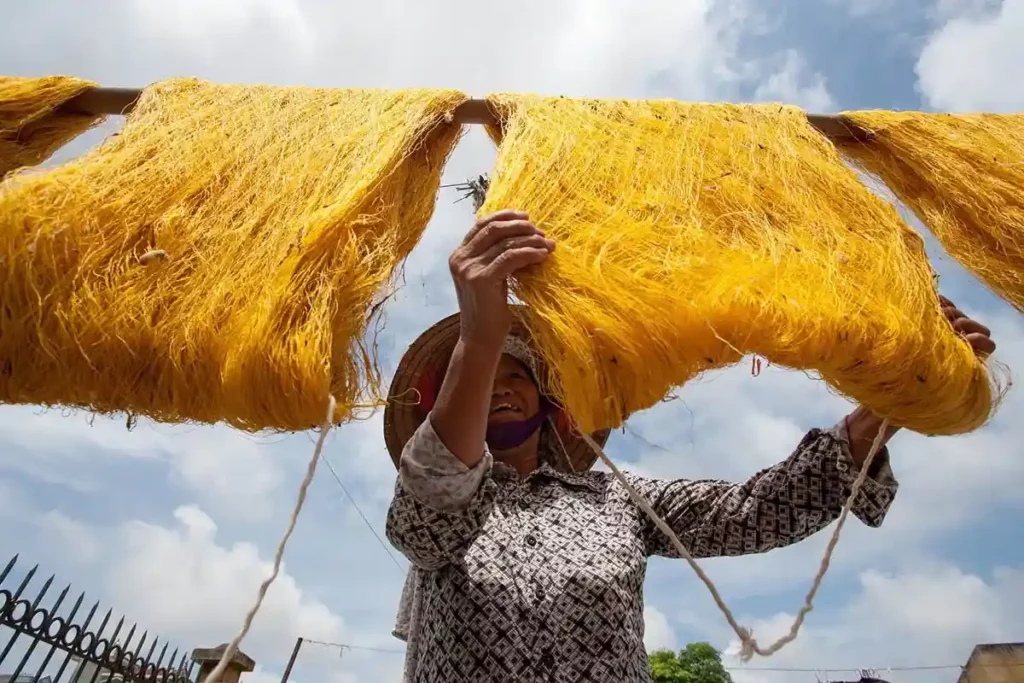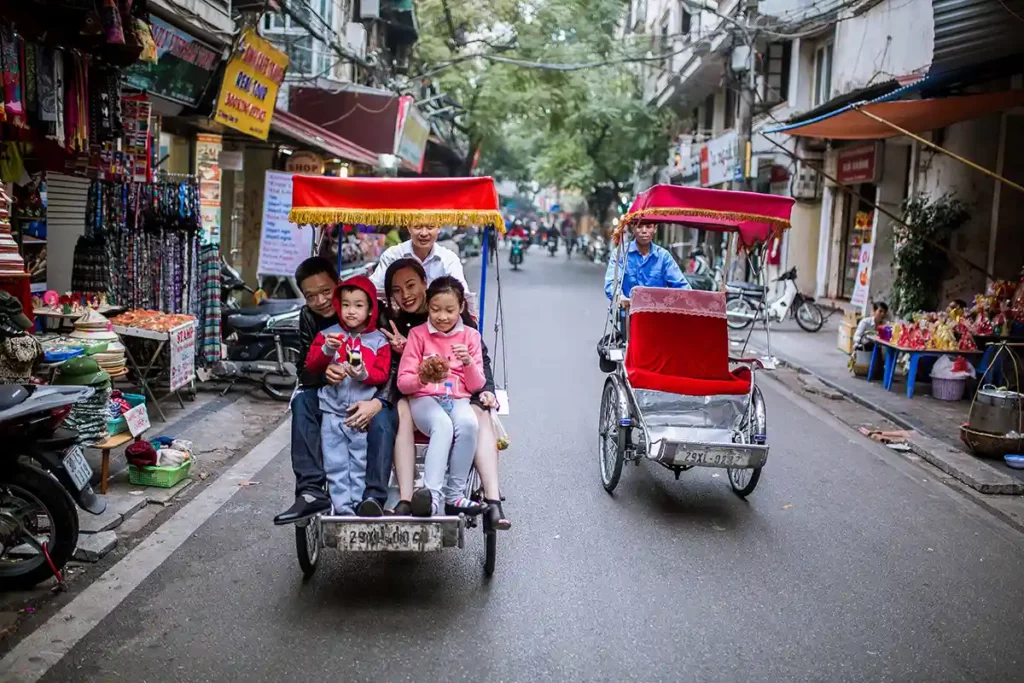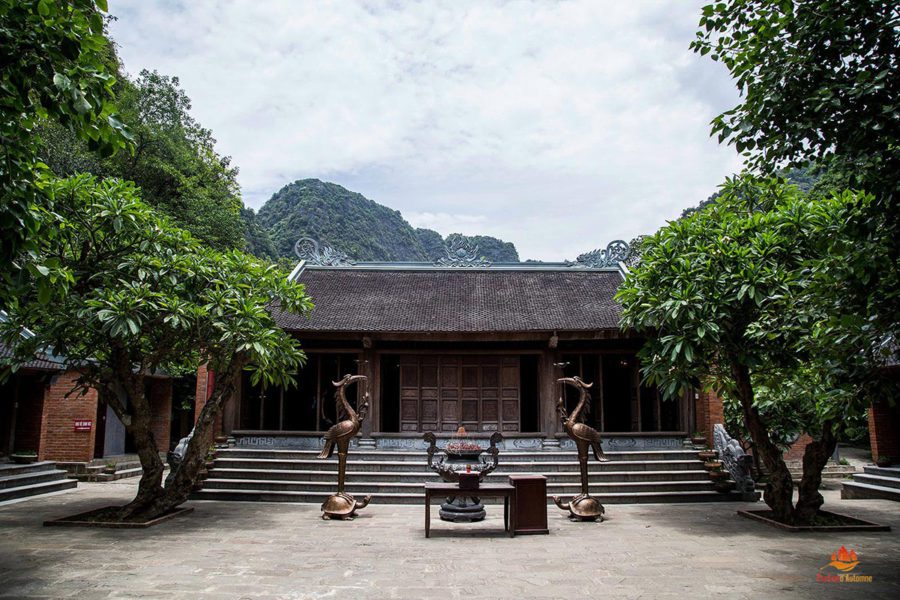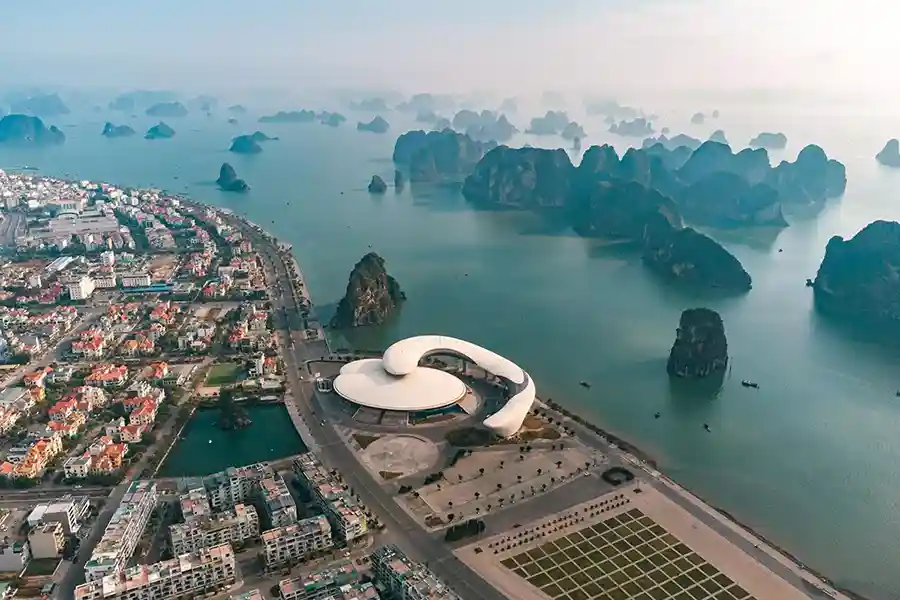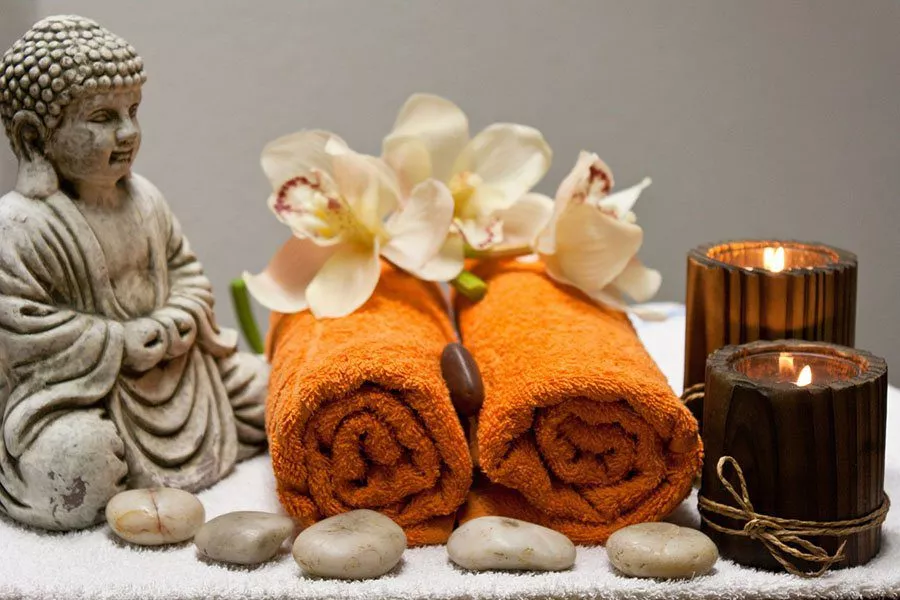Can Tho is the largest city in the Mekong Delta region, with a population approaching two million today.
Visitors can learn more about the local history and culture at the Can Tho Museum, located on Hoa Binh Avenue. Since its founding in 1739, the city has experienced several periods of foreign domination. Despite these challenging times, Can Tho has earned a reputation as one of the friendliest cities in Vietnam, offering a warm welcome to travelers.
The History of Can Tho
A look back at the key moments in the city’s history.
The Tran Giang Period
Can Tho was founded under the name Tran Giang in 1739, following the establishment of a palace by Mac Cuu, who had arrived from Guangdong, China. Gradually, Chinese colonization of the region took place, and over the years, Tran Giang became an important stronghold, particularly during the fierce territorial battles of the 1770s and 1780s. This period also saw the construction of some of the most significant architecture in the city’s history. For example, the Guangzhou Assembly Hall was built at the end of the 1800s on the banks of the Can Tho River, in honor of the Chinese deity Kuang Kung.
The Phong Phu Period
The city was renamed several times under the rule of the Nguyen Dynasty. In 1839, the region became part of Phong Phu District, a place known for its peace and prosperity. This marked the beginning of one of the most stable and prosperous periods in Can Tho’s history, as a significant population settled along the banks of the Mekong River. At that time, boats were the primary mode of transportation, and it was the settlers who established the first floating markets, traces of which can still be seen today.
Under French Colonization
In 1867, the French broke the 1862 peace treaty, allowing them to occupy three eastern provinces. They later took control of the western provinces, including Phong Phu. Can Tho was officially designated as a district by the French in 1876.
After the departure of French troops in 1954, the city was renamed Phong Dinh under the South Vietnam government during the 1960s and 1970s. It was only after the reunification in 1975 that the city returned to the name Can Tho.
It was the American forces who built the small Tra Noc Airport in 1965, which remained a regional airport for many years. However, the rapid economic growth in the Mekong Delta and the influx of tourists led to the construction of an international airport, inaugurated in 2011.
How to get to Can Tho
By air
Can Tho International Airport (VCA) is about eight kilometers from the city center. There are domestic flights from Hanoi, Phu Quoc, Da Nang, and Con Son Island (Con Dao), operated by Vietnam Airlines and VietJet Air.
By bus
Several bus companies offer frequent departures (every 30 to 60 minutes) 24/7 between Can Tho and Ho Chi Minh City, with the journey taking around four hours depending on traffic.
The main bus operator is Phuong Trang (Futa). Bus tickets include a free shuttle to and from the bus station. Upon arrival at Can Tho Bus Station with a Phuong Trang bus, go to their office and request the free shuttle, which can drop you off at any downtown hotel. Likewise, your hotel can call Phuong Trang to arrange a pick-up and free shuttle to the bus station.
Phuong Trang’s sleeper buses to Ho Chi Minh City depart every hour 24/7, and every 30 minutes during the day. Extra buses are often added to meet demand. The fare is 110,000 VND, and the trip lasts about four hours, including a 15-minute break. Upon arrival at Mien Tay Bus Station in Ho Chi Minh City, a free shuttle takes passengers to the bus company office at the west end of District 1. To catch it, ignore the taxi drivers and follow other passengers to the Phuong Trang minivans.
Other destinations from Can Tho via Phuong Trang:
Ca Mau : Continuous seated buses from 3:00 a.m. to 7:00 p.m. Fare: 120,000 VND
Chau Doc : Continuous buses from 4:00 a.m. to 7:00 p.m. Fare: 100,000 VND.
Da Lat : Sleeper buses at 7:00 a.m. and 8:30 p.m. Fare: 325,000 VND.
Rach Gia : Sleeper buses depart up to ten times a day from 3:30 a.m. to 7:00 p.m. Fare: 110,000 VND.
Other bus companies offering departures from Can Tho bus station:
Thanh Buoi Bus Company
HCMV : every 30–60 minutes, fare 110,000 VND, 4-hour journey.
Da Lat : departures at 6:00 a.m. and 8:00 p.m., fare 320,000 VND, 11-hour journey.
Vu Linh Bus Company
Ca Mau: departures every hour from 4:00 a.m. to 8:00 p.m., fare between 110,000–160,000 VND.
When to visit Can Tho
Like many regions in southern Vietnam, Can Tho has two distinct seasons: the rainy season from May to November and the dry season from December to April. The average temperature throughout the year ranges between 29°C and 33°C, with April being the hottest month. During the rainy season, especially in October and November, monsoon rains can cause the Mekong River to swell, sometimes resulting in local flooding.
Things to do in Can Tho
Visit the Cai Rang floating market
The floating market has long been the biggest attraction in Can Tho. Unfortunately, some of the traditional practices have faded, as many traders now prefer land-based markets for conducting business. Additionally, the floating market was closed for an extended period during the COVID-19 pandemic, which pushed vendors to seek alternative ways to sell their goods. Today, the so-called Cai Rang floating market is mainly a tourist market, where visitor boats outnumber the trading boats.
Nonetheless, a boat trip on the Hau River and a visit to Cai Rang is still worthwhile. You can enjoy breakfast on the river and taste local specialties at shops set up on the floating houses. We recommend boarding a small wooden boat, which will take you to the market and then into a quiet canal away from the crowds.
Practical information:
Where to go? At the Xom Chai pier. It’s best to arrive the day before to book your tour.
Cost: Approximately 100,000 VND per person for a tourist boat, and 150,000 VND for a wooden sampan. Note: tourist boats do not enter the small canal and stop only at the Cai Rang market.
Cai Rang Floating Market, Can Tho. Photo credit: Mathieu Arnaudet
Stroll through Cai Rang’s land market
Since Cai Rang’s floating market is much less lively than before, the land market is far more active and definitely worth a visit! After returning from your boat trip, we recommend visiting Can Tho’s land market (Cho Can Tho or Cho Ca, meaning “fish market”). Early in the morning, the activity is at its peak!
Visit the Phong Dien floating market
Here’s a great alternative to Cai Rang’s floating market. Located about 20 km southwest of Can Tho, the Phong Dien market is one of the most charming markets and, best of all, it’s less frequented by tourists who usually visit Cai Rang. Around 20 to 30 small sampans gather daily to trade goods. You can contact us to include this visit in your itinerary! The tour can also include visits to several tropical fruit gardens, accessible only by sampan.
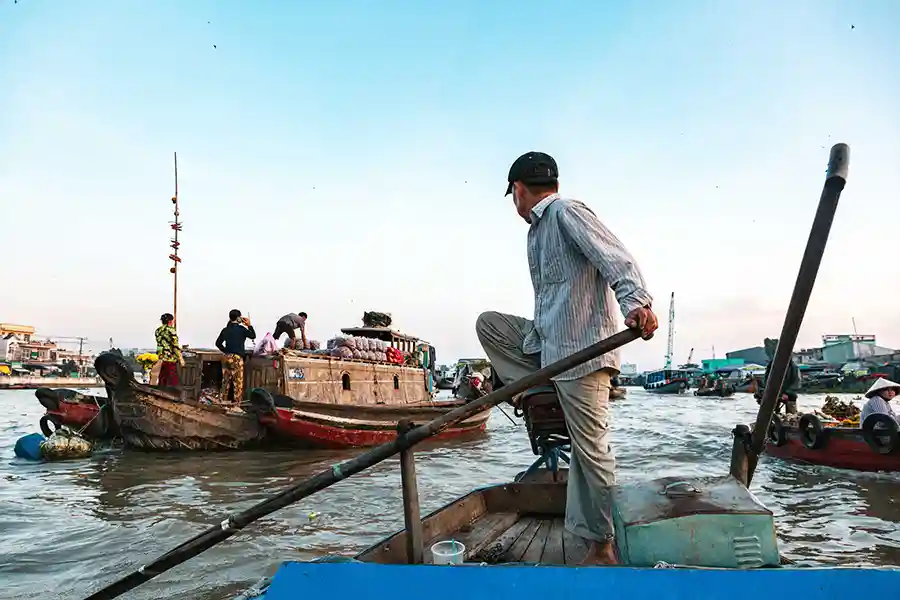
Phong Dien floating market. Photo credit: Can Tho Tourism
Visit the Hu Tieu rice noodle workshops
Here’s another fascinating visit that can be combined with a boat tour. One of the most famous workshops for watching Hu Tieu noodles being made is called Sau Hoai. Located about 6 kilometers from Cai Rang Floating Market, it is also accessible by motorbike along the Can Tho River. In operation since 1982, the Sau Hoai noodle factory is now in its third generation and still produces the delicious and famous Hu Tieu noodles by hand.
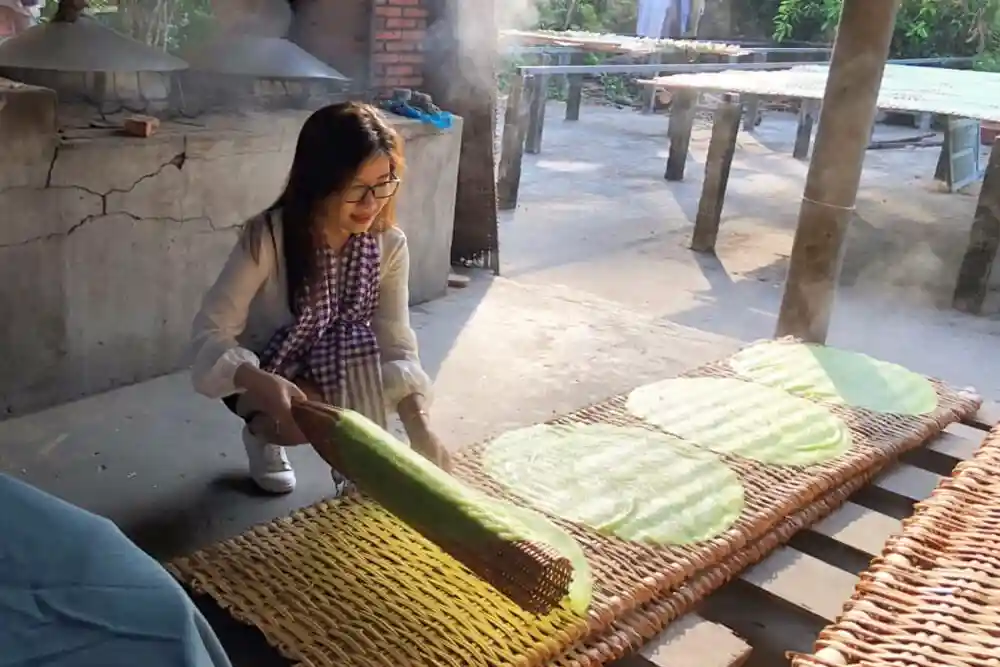
Hu Tieu rice noodle making
Visit the Ong Temple
Located in the heart of Can Tho city and overlooking the vast Ninh Kieu pier, Ong Temple—also known as the Quang Trieu Assembly Hall (Guang Zhao)—was built on a plot of more than 500 m². It originally served as the meeting hall for the Chinese community from Guangzhou and Zhaoqing (Guangdong, China) in the 18th century. The current place of worship was constructed in 1894 and has preserved its architecture almost intact since then. Many materials, such as wooden and stone pillars, plinths, couplets, beams, bronze bells, and incense burners, were brought from Guangdong, China. The temple exudes a unique atmosphere, especially due to the constant burning of incense. People come here to worship Kuang Kung, a deity of loyalty, justice, reason, intelligence, honor, and courage. Numerous cultural and religious activities are held at the temple, the most famous being the Lantern Festival.
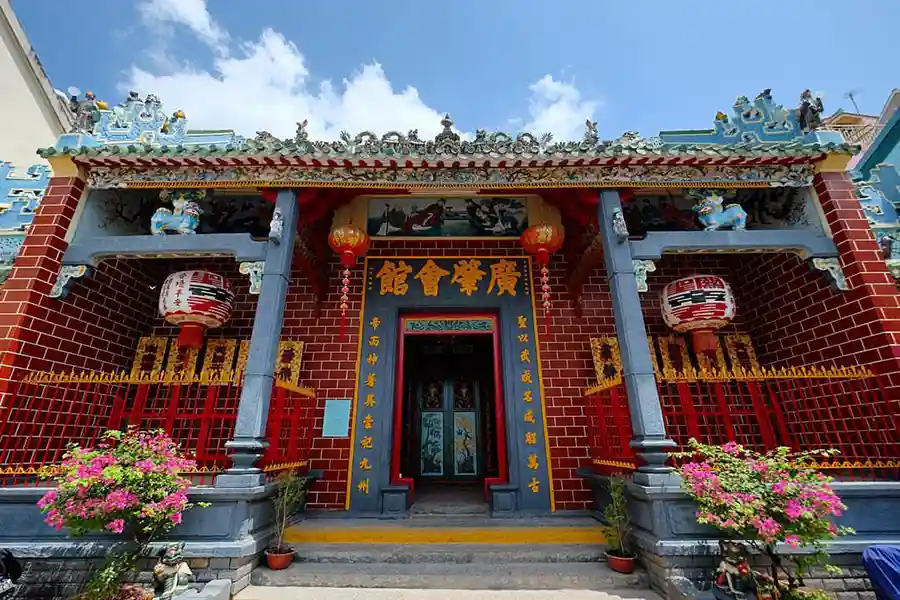
Ong Temple in Can Tho
Visit the Khmer Pagoda Munir Ansay
The Munir Ansay Pagoda is a large Khmer pagoda in Can Tho city. This pagoda is not only one of the most beautiful in the western capital (Tay Do) but also a symbol of Khmer architecture. Munir Ansay Pagoda (Muni Răng sây) was built in 1948, initially using simple bamboo materials, and is located at 36 Hoa Binh Avenue, Can Tho city.
It was only in 1954 that new doors were added to the Three Treasures Tower (Tam Bao), which is inspired by the famous Angkor Wat complex in Cambodia. The new main hall was constructed in 1964. Like other Khmer temples, the main hall faces east, as east is considered the direction of the gods in Buddhism.
Every year, several festivals are held at Munir Ansay Pagoda, including Cholchonam Thomay – Lunar New Year (March 13–15 of the Chinese calendar), Ok-om-Bok (October of the Chinese calendar), Donta – Ancestor Worship Festival (August of the Chinese calendar), and the Kathina festival. These ceremonies are celebrated with joy and solemnity, and many traditional folk games of various forms are also offered to visitors.
Munir Ansay Pagoda is the largest and oldest Khmer pagoda in Can Tho.

Khmer Munir Ansay pagoda.
Visit the Binh Thuy ancient house
The Old Binh Thuy House is one of the rare remaining Franco-Chinese-Vietnamese style houses in Can Tho. In 2009, it was designated as a national architectural and artistic monument.
The house was built in 1870 by the Duong family on a plot of nearly 6,000 square meters. Duong Minh Hien, a member of the sixth generation of the Duong family, now takes care of the house’s maintenance.
The unique aspect of the Old Binh Thuy House lies in its reflection of Eastern feng shui, resulting from a harmonious combination of Eastern and Western cultures. Visitors can thus see the luxurious French style integrated with the traditional villa design in the architecture of the house.
The house was used as a filming location for certain scenes in The Lover by Jean-Jacques Annaud, adapted from Marguerite Duras’ novel.
Practical information:
Location: 144 Bui Huu Nghia Street, Binh Thuy Ward, Can Tho City
Opening hours: 8:00 AM – 12:00 PM, 2:00 PM – 6:00 PM daily
Entrance fee: 20,000 VND per person; visitors must request permission from the owner to enter. Although it is a national heritage site, the Old Binh Thuy House is still under the personal management of the Duong family
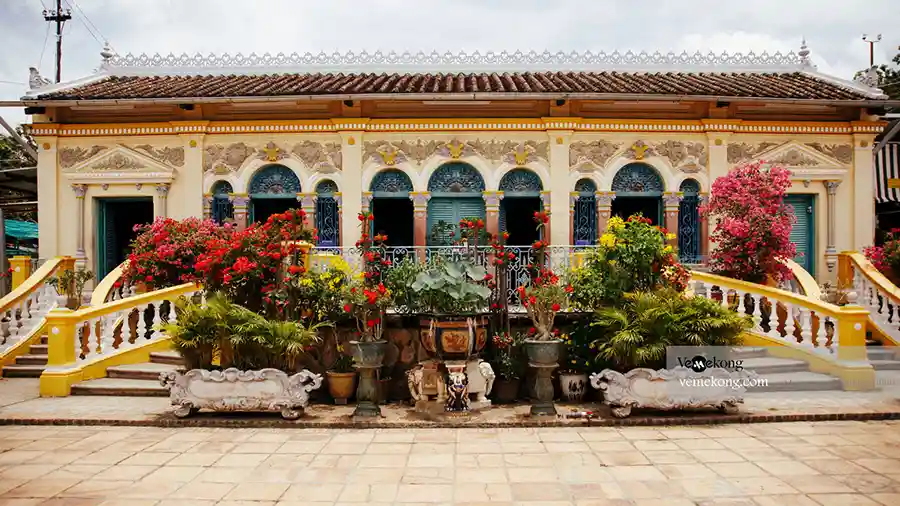
Binh Thuy ancient house. Photo credit: Mathieu Arnaudet
Enjoy the pedestrian streets on weekends
Still in its early stages, Vietnamese cities are beginning to create fully pedestrian areas. Since May 2022, Can Tho has established a pedestrian street around the Ninh Kieu area, along the Mekong River. This area is pedestrian-only on weekends and in the evenings (from 6:00 PM to 10:00 PM). On site, you will find food stalls, and cultural and artistic activities are regularly organized. During this time, it is also possible to join a guided food tour with a specialized guide.
What and where to eat in Can Tho?
Here are some local specialties:
# Bún riêu at the Cai Rang floating market: You can find several varieties, such as crab or fish. Bún riêu is served with a tomato-based broth and often topped with minced freshwater crab. Various types of freshwater paddy crabs are used in this dish, including the brown paddy crab found in Vietnamese rice fields. It’s a must-try for breakfast at the Cai Rang floating market.
# Cơm Cháy Kho Quẹt (crispy rice) with caramelized fish sauce: A little delight! Cơm Cháy Kho Quẹt, or Vietnamese crispy rice with caramelized fish sauce, is a specialty of the southwestern region and very popular with travelers. We promise you won’t be able to stop until the last bite!
# Bánh xèo with duck meat: Bánh xèo are Vietnamese savory pancakes made from rice flour. They are crispy and filled with a variety of savory ingredients. The name literally translates as “sizzling cake,” referring to the sound the batter makes when poured into a hot pan. In Can Tho, the specialty is duck meat filling!
Our recommendation: Banh Xeo 7 Toi – 45 Hoang Quoc Viet
We also recommend Quán Cháo Cối MT.68, which welcomes you in a charming bamboo-decor setting and serves a wide range of delicious local dishes. Try their specialty Chai Coi, a chicken porridge with numerous green vegetables not found anywhere else in Vietnam.
Where to stay in Can Tho?
As the main city of the Mekong Delta, Can Tho offers a wide range of accommodations. We’ll divide our recommendations into three categories: luxury hotels, boutique hotels, and budget options.
Luxury Hotels
Azerai Can Tho: Arguably the most beautiful hotel in the city. Located 1.5 km from the Ninh Kieu Pier and 2.5 km from the city center, the hotel offers full luxury and wellness services, including a pool, spa, and gym. The ultimate wellness hotel in Can Tho. Price: $250–300 per night.
Binh Minh Ecolodge: If you prefer the tranquility of the countryside, this ecolodge is perfect. The rooms are beautifully decorated, and the colorful yellow exterior brings a cheerful atmosphere. The spacious rooms offer peaceful garden views. Price: around $100 per night.
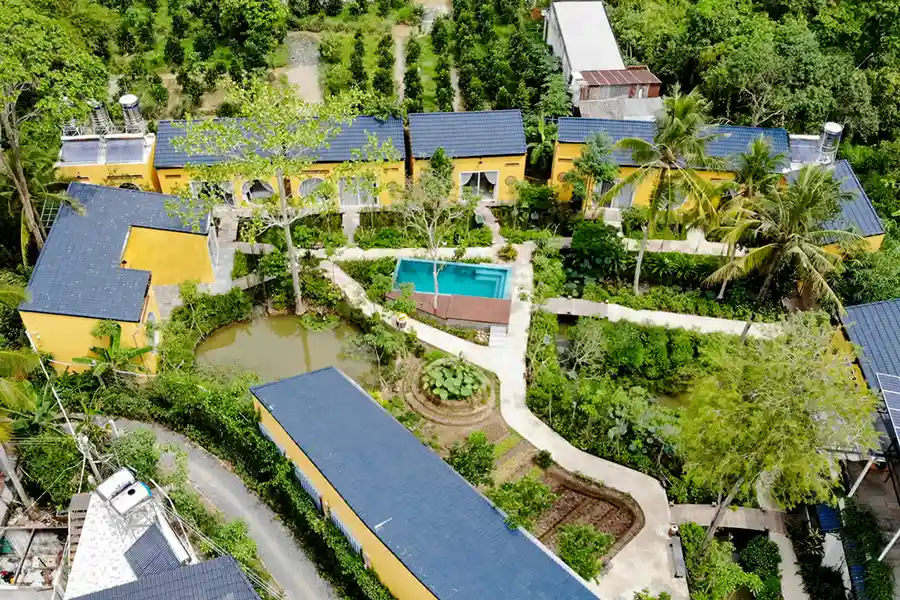
Aerial view of Binh Minh Ecolodge
Boutique hotels at mid-range prices
Bamboo Ecovillage: Ideal for those wanting to escape the city and enjoy a peaceful night. Bamboo Ecovillage is located 10 km from the center of Can Tho, on the edge of a lake. It offers fully equipped and spacious bamboo bungalows. Bicycles are available on site, and you can also try fishing. Price: around $50 for a double room with garden view. The 75 m² family bungalow costs about $100 per night.
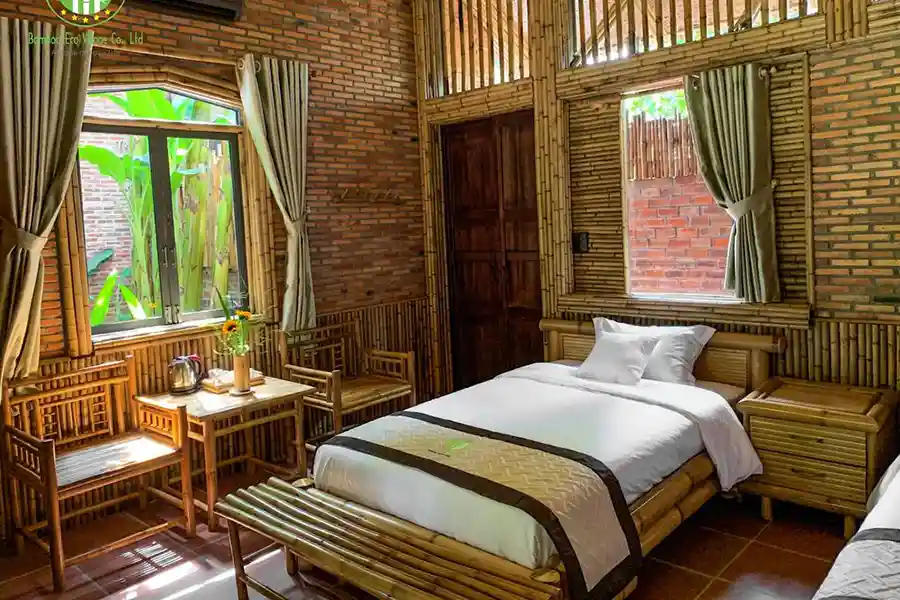
Interior of a Bamboo Eco Village Bungalow
Magnolia’s Can Tho: Located very close to the Ninh Kieu Pier (where you can board for the Cai Rang floating market, the pedestrian street, etc.), this boutique hotel sits above a café of the same name. It offers newly decorated rooms and is ideal for mid-range budgets. Price: $30–$40 per night.
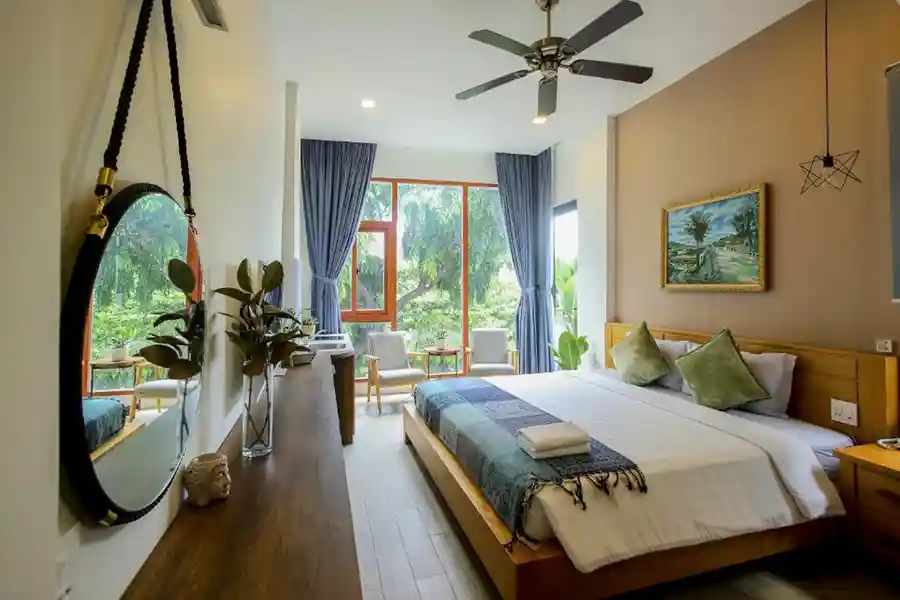
Double Room at Magnolia’s Can Tho
Budget hotels
Mid Night: This is a 2-star hotel suitable for tighter budgets. Prices are around $15 for a superior double room, $20 for a larger room with a king-size bed, and $25 for a 35 m² “suite” with a large bathtub. Note: the décor is a bit unusual!
Festivals throughout the year
Lunar New Year (Tết): Usually falling at the end of January or early February, Tết is celebrated in Can Tho as throughout Vietnam. In the lead-up, locals are busy preparing, and streets fill with stalls selling gifts, especially the famous peach blossoms and kumquats. The city celebrates with parades and fireworks.
Chol Chnam Thmay (Khmer New Year): Celebrated by the Khmer community in Can Tho, usually in mid-April. The festival lasts three days, each with its own rituals. Families gather to cook and share meals during the holiday.
Lăng Cá Ông Festival: A special festival honoring whales, held during the third lunar month. People make offerings and pray to the whale gods, showing gratitude for their protection in the ocean.
Tết Trung Nguyên: Celebrated on the 15th day of the 7th lunar month, also known as the Day of the Dead and Ghosts. People pay respects to deceased ancestors by offering food, clothing, and burning incense at temples and pagodas.
Now you know everything to plan your visit to Can Tho! Contact us to organize your trip to Southern Vietnam.

